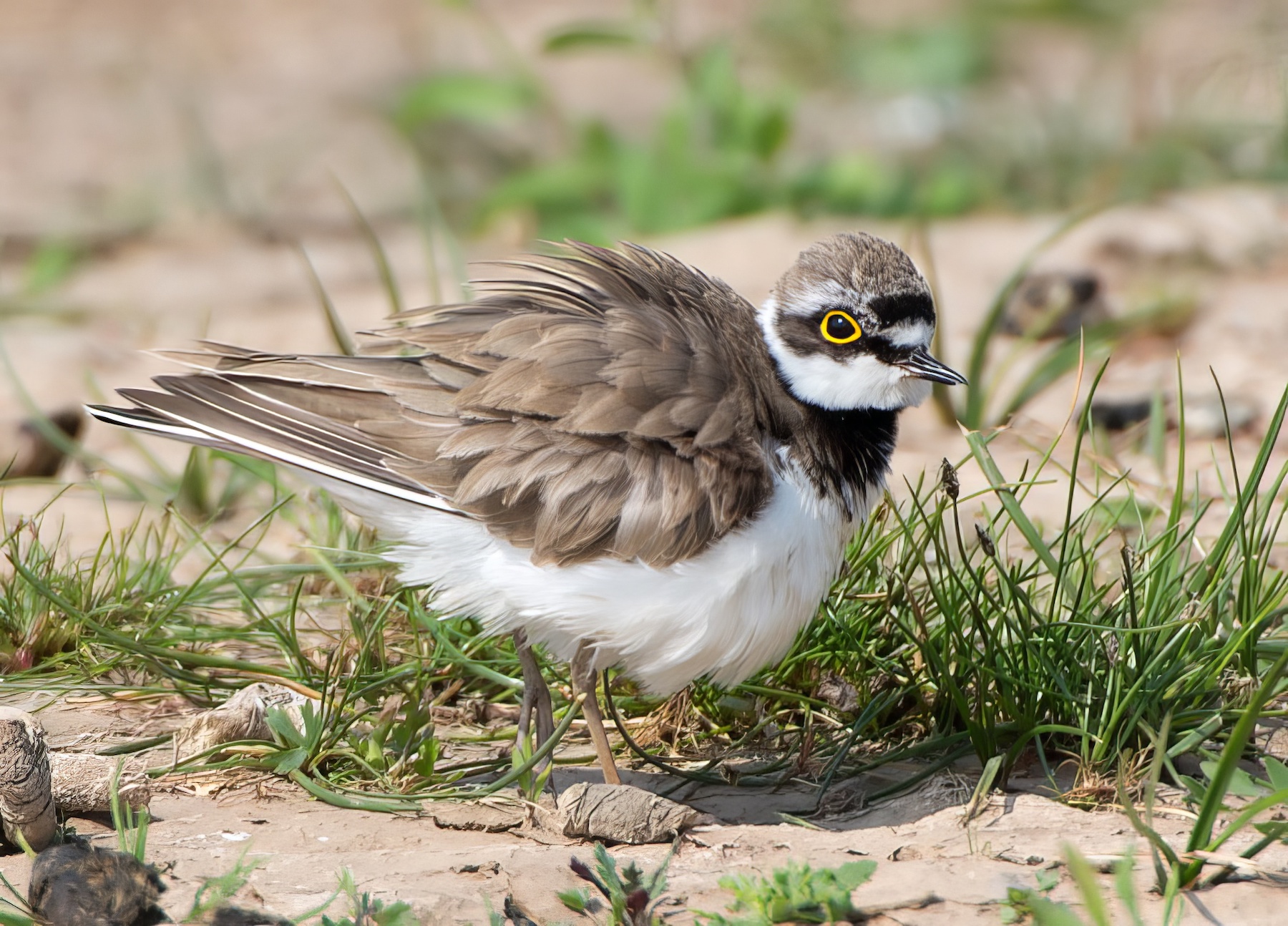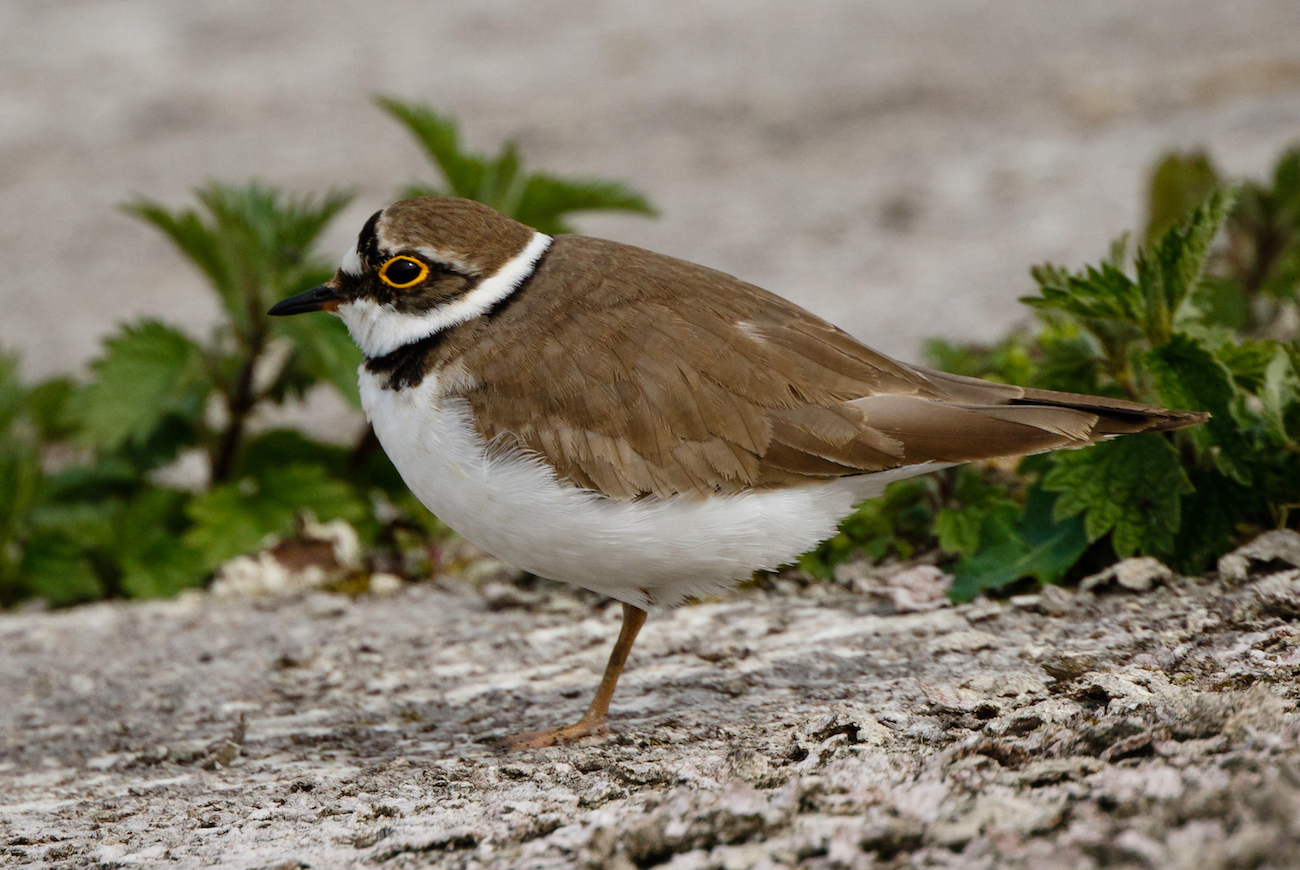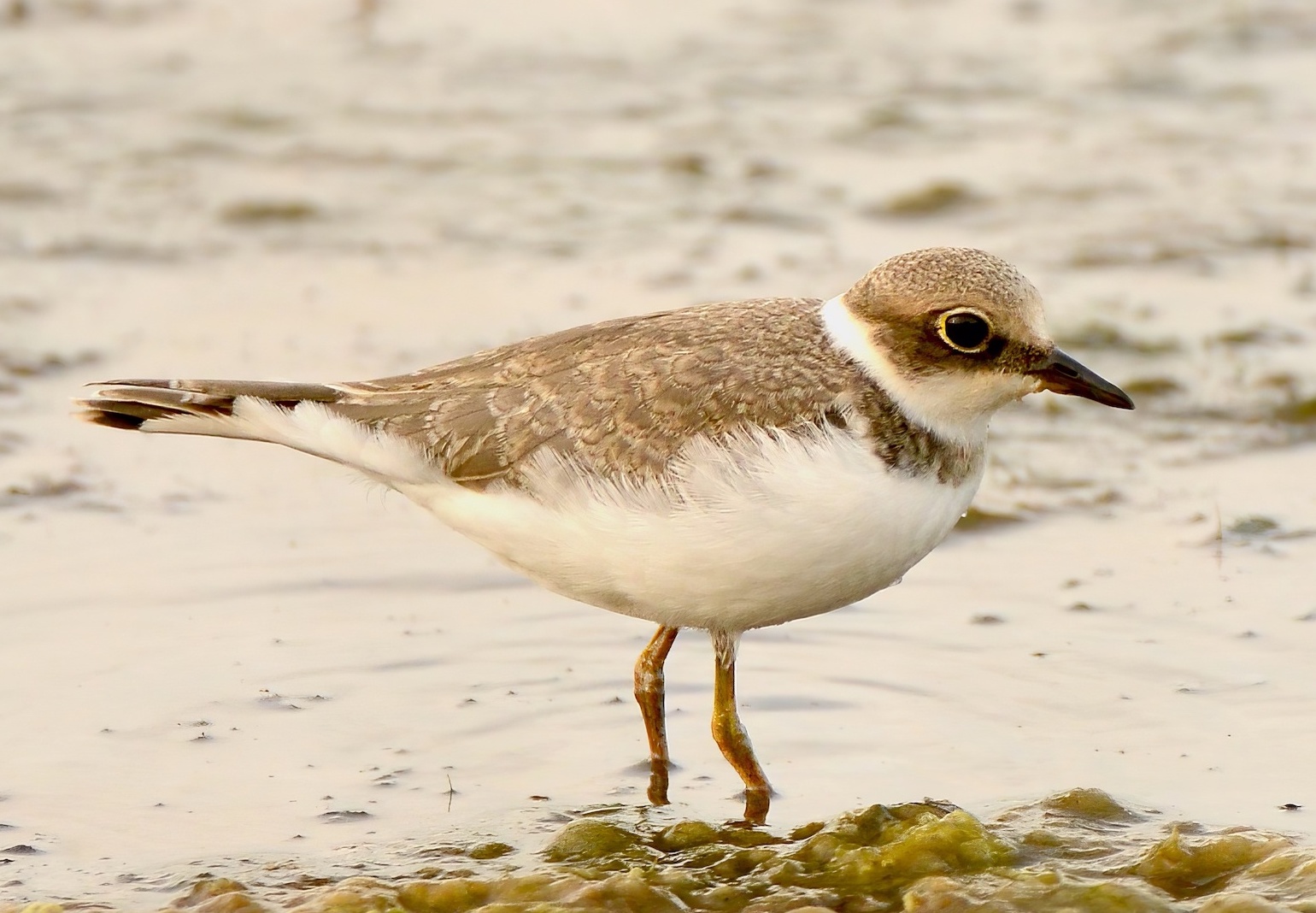Little Ringed Plover Charadrius dubius
Scarce summer visitor and passage migrant since 1950.



Little Ringed Plover colonised Britain in the 1930s, breeding for the first time in 1938 at Tring, Hertfordshire. Further breeding in Britain didn't occur until 1944, when two pairs nested in Hertfordshire and another pair in Middlesex. By 1950 about 30 pairs were summering in England; 80% of these were in eight counties south of the Welland-Severn line and the other half-dozen were in Lincolnshire, Derbyshire and Yorkshire (Parrinder 1962). They first bred at a gravel pit in Lincolnshire in 1950, and again in 1951-1953. These events were captured in the LNU Transactions of 1954 as follows:
In each of the years 1950-53 the breeding of the Little Ringed Plover was recorded in Lincolnshire. The first discovery was made on June 8th, 1950, at a gravel pit near Woodhall Spa, when a pair was seen and eventually one of them watched on to a nest of four eggs. The habitat was typical of those described for the south of England, a gravel-pit containing shingly banks and shallow water. On July 26th, 1950, A. E. Smith (AES) revisited the site with C. L. Ottaway (CLO) and saw one adult and one well-grown young. In 1951 only one visit was made, on June 15th, when AES and CLO saw a pair with one small chick 10-14 days old. In 1952, E. A. Chapman made an independent discovery of Little Ringed Plovers on the same gravel-pit. On June 29th and July 4th only a pair of adults was seen, but on July 9th a juvenile was also seen, and a nest found containing two eggs. On July 28th this nest contained three eggs and one adult was seen. On Aug 15th one adult was seen and there were two small chicks on the strip of land where the nest had been. In 1953 the site was not visited but a clutch of four eggs was shown to a member of the Lincolnshire Naturalists’ Trust by boys who had found it in another gravel-pit in the same area (R. K. Cornwallis, AES).
This appears to be the first occurrence of the species in Lincolnshire. There is a record in September 1894, noted by Blathwayt (L.N.U. Trans., 1914) but not accepted by him. The occurrence at Gibraltar Point of two birds, one of which was trapped and ringed, on April 30th, 1951, and of one on June 16th, 1952, provides further evidence of the spread of the species to the county. In 1953, others were seen at Nene mouth July 26th; Wisbech SF August 13th (CBC); and an immature bird seen near Horncastle on the unusual date of November 29th. Approach was made to within twelve feet and all the diagnostic points noted. It remained in the area all day (ADT).
It is limited by available breeding habitat, most frequently flooded gravel pits and coastal lagoons. The Atlas reported 40 pairs at 20 sites in 1970; 33 pairs at 24 sites in 1984; and 25-35 pairs in the early 1990s. Later, RBBP records show an average of 24 pairs per year bred during the period 2013-2017. The long run of data reported by RBBP from 1996 onwards shows a run of bad years in the late 1990s. Counts have ranged from four pairs (1996,1998, 2006) to 33 (2017), 28 (2018), 37 (2019) and 30 (2020). The recent improvement in fortunes is down to attractive breeding habitat created at Frampton Marsh which holds about half the county population. Birds arrive from March onwards and the last ones are usually gone in September. Breeding inland, smaller numbers have been ringed compared to other more coastal waders. Despite this, nestlings ringed in-county have been recovered abroad in Belgium, France, and Burkina Faso. An adult male ringed at Blankney SQ in 1998 was still alive in 2016 when it's ring was again read in the field (for the fifth time) at Scaling Dam, Cleveland when it was 17 years and 10 months, the current UK age record for this species.
Reference
Ornithology report in Lincolnshire Naturalists Union Transactions Vol. XIII No. 3, 211-12; December 1954.
Parrinder, E. R. (1962). Little Ringed Plovers in Britain 1960-62. British Birds 57 (5): 191-198.
(Account as per new Birds of Lincolnshire (2021), included September 2022; updated July 2023)
